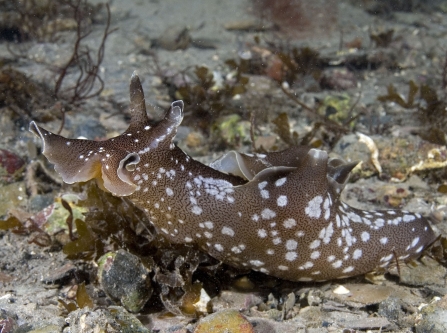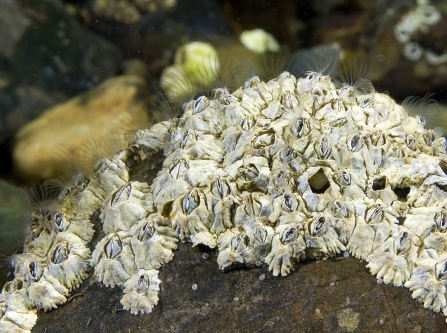Once again it's the time of year when we celebrate our loved ones through good food, bad films, and colourful floral arrangements. Valentine's Day may be one of the key events in the human romantic calendar, but our marine wildlife puts just as much effort into wooing potential partners. Here are a few local marine species that either enjoy a lot of company or don't let it get in the way of a good time.
Love train
Sea hares are hermaphrodites, which proves a great advantage when it comes to courtship. During the mating season they meet up and form a sort of conga line, with each acting as male to one adjacent partner and female to the other - at the same time! The result is pink, spaghetti-like strands containing millions of eggs, which the hares attach to underwater plants for safekeeping.



